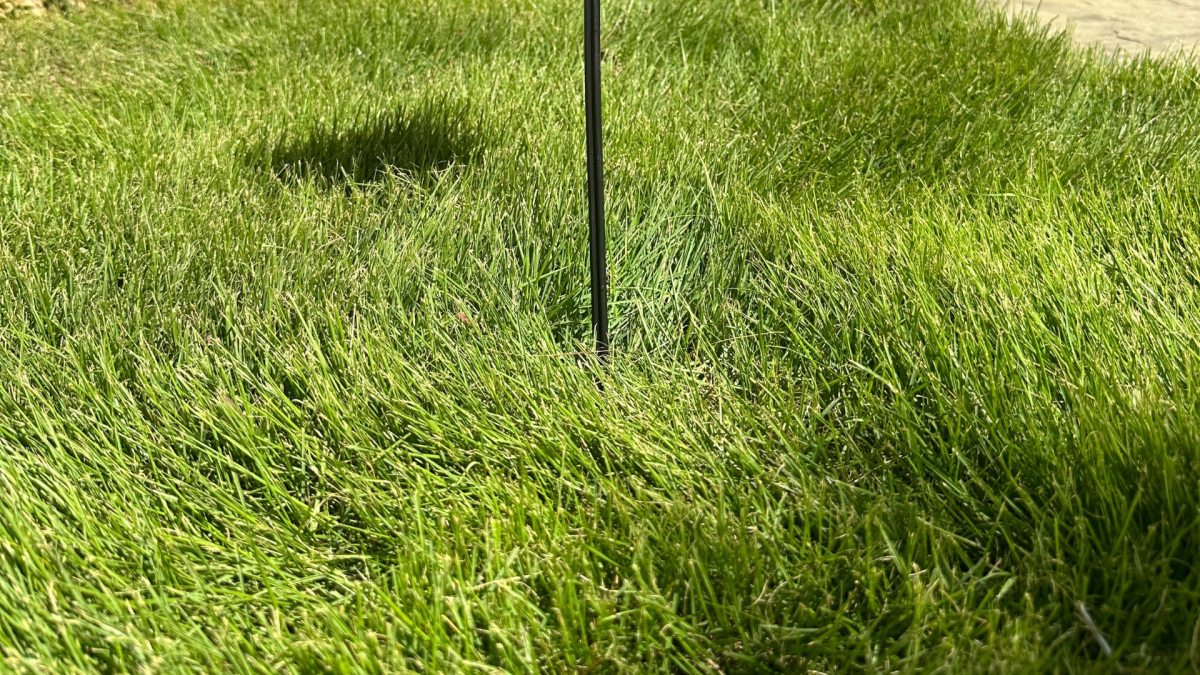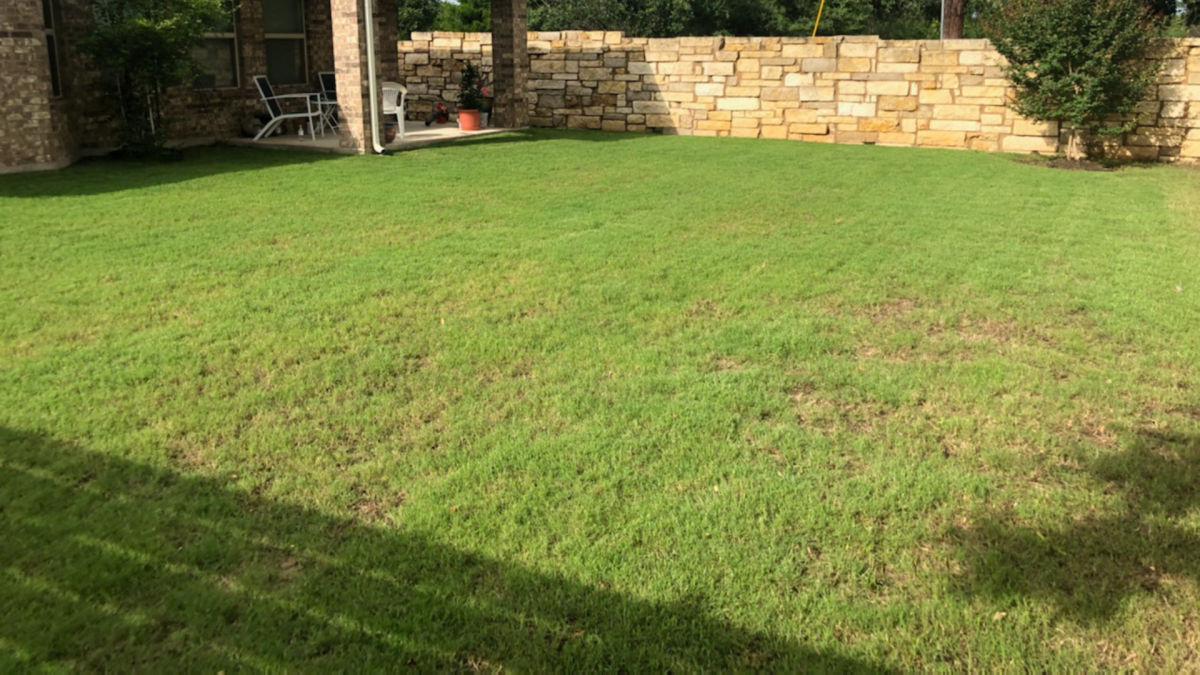A narrow treatment window is closing for Central Texas homeowners hoping to avoid aggressive spring weed infestations. Lawn care professionals report that many families miss the optimal period for pre-emergent herbicide applications, resulting in widespread weed problems that require significantly more time, money, and chemical intervention to control once established.
The critical treatment period spans late October through December, when soil temperatures and moisture conditions create ideal effectiveness for preventive barriers. Homeowners who delay treatments past this window face limited options and reduced success rates when cool-season weeds germinate and establish root systems throughout winter months.
Understanding proper timing and application methods helps families protect their outdoor spaces while minimizing chemical use and maintaining safe play areas for children and pets. Green Dream Lawns addresses this concern in their comprehensive guide on winter lawn preparation for Central Texas homeowners, emphasizing proactive approaches that prevent problems rather than reacting after weeds appear.
Why Timing Matters More Than Product Selection
Pre-emergent herbicides work by creating a chemical barrier in the top layer of soil that prevents weed seeds from germinating. Unlike post-emergent treatments that kill existing weeds, these preventive applications stop problems before they start. However, their effectiveness depends entirely on proper timing relative to weed seed germination patterns.
Critical timing factors include:
Weed seeds germinate when soil temperatures reach specific ranges. Cool-season weeds common throughout Central Texas begin germinating when soil temperatures drop to 55-60 degrees Fahrenheit. This typically occurs between late October and early December in the Georgetown, Liberty Hill, and Leander areas. Applications must create barriers before germination begins, as products cannot stop weeds once sprouting starts.
Pre-emergent herbicides require adequate moisture to activate and move into the soil profile where weed seeds reside. Late fall and early winter rainfall patterns in Central Texas provide natural activation, but homeowners must ensure treatments receive at least a quarter inch of water within 14 days of application for maximum effectiveness.
Most pre-emergent products remain active for approximately three months. Applications in late October or November provide protection through January and February when cool-season weed germination peaks. Delayed treatments reduce the protective window, leaving gaps when new weed seeds can germinate successfully.
Established grass must not be actively stressed when pre-emergent applications occur. Warm-season grasses like St. Augustine and Bermuda enter semi-dormancy during fall, creating ideal conditions for treatment without risking turf damage. Spring applications face higher risks of harming grass during active growth periods.
The True Cost of Missing the Prevention Window
Families who skip fall pre-emergent treatments face compounding problems throughout winter and spring. Cool-season weeds germinate quietly during November and December, establishing extensive root systems while remaining relatively small and inconspicuous. By February and March, these invaders explode in size and seed production, dominating lawns and choking out desirable grass.
Common winter weeds in Central Texas include:
Henbit produces purple flowers and spreads rapidly through seed production and vegetative growth. A single plant can generate thousands of seeds, ensuring future infestations. Its scalloped leaves and aggressive growth habit smother grass and create unsightly patches throughout lawns.
Chickweed forms dense mats of low-growing foliage covered in tiny white flowers. This aggressive invader thrives in shaded areas and spreads quickly across entire properties. Its shallow root system makes hand pulling seem easy, but fragments left behind regenerate into new plants.
White clover and other clover species develop extensive root systems that compete aggressively with grass for nutrients and water. Their ability to fix atmospheric nitrogen gives them competitive advantages in low-fertility soils. Once established, clover proves extremely difficult to eliminate without repeated treatments.
Dandelions send down taproots that can extend several feet into soil, making complete removal nearly impossible without specialized tools. Each bright yellow flower produces hundreds of seeds that spread via wind, rapidly infesting entire neighborhoods.
Annual bluegrass creates light green patches that contrast sharply with dormant warm-season turf. This cool-season grass grows vigorously during winter, then dies as temperatures rise, leaving dead brown areas throughout lawns during summer months.
Controlling established weeds requires post-emergent herbicide applications that cost significantly more than preventive treatments. Multiple applications over several weeks become necessary for heavy infestations. Hand pulling proves labor-intensive and often ineffective when root systems remain intact. The chemical load on lawns increases substantially compared to single pre-emergent applications, raising concerns for families with children and pets.
Effective Application Strategies for Maximum Protection
Professional pre-emergent applications follow precise protocols that ensure complete coverage, proper product selection, and optimal timing. These factors determine whether treatments successfully prevent germination or fail to provide adequate protection.
Application best practices include:
Different grass types tolerate different herbicide formulations. St. Augustine grass requires products specifically labeled as safe for this sensitive variety. Bermuda grass accepts a wider range of formulations but still requires appropriate selection. Using incompatible products causes turf damage that persists for months.
Gaps in coverage create opportunities for weed breakthrough. Professional spreaders calibrated for specific products ensure even distribution across entire lawn surfaces. Overlapping slightly at pass edges prevents skips while avoiding excessive application in any area.
Rainfall or irrigation must move herbicides from grass blades into soil where weed seeds germinate. Watering within two weeks of application, ideally within 72 hours, activates products and establishes protective barriers. Without adequate moisture, effectiveness drops dramatically.
Wind, temperature extremes, and grass stress all impact application success. Professional services monitor conditions and adjust schedules to ensure optimal timing. Applications during inappropriate conditions waste product and money while providing minimal protection.
What Professional Services Provide Beyond Product Application
Expertise in product selection, timing, and application techniques distinguishes professional services from do-it-yourself approaches. Green Dream Lawns combines years of Central Texas experience with ongoing education about new products, emerging weed species, and evolving best practices.
Professional assessment identifies existing weed pressure, soil conditions, and grass health before recommending treatment approaches. Properties with heavy existing weed populations may require post-emergent treatments before pre-emergent applications for comprehensive control. Compacted soils benefit from aeration before herbicide application to improve product movement and effectiveness.
Licensed applicators understand proper mixing ratios, application rates, and safety protocols that protect both properties and applicators. Calibrated equipment ensures accurate product delivery without waste or over-application. Professional liability insurance protects homeowners if problems occur during or after treatments.
Comprehensive programs combine multiple application timings for year-round weed suppression. Spring pre-emergent treatments targeting warm-season weeds like crabgrass complement fall applications focused on cool-season invaders. This integrated approach provides continuous protection rather than addressing problems reactively.
Record keeping tracks application dates, products used, and results achieved. This documentation helps refine future treatments based on actual performance rather than assumptions. Professional services adjust recommendations annually based on weed pressure patterns, weather conditions, and individual property responses.
Integrated Approaches for Long-Term Weed Management
Pre-emergent applications represent one component of comprehensive weed management strategies. Healthy, thick turf provides natural weed suppression by shading soil and outcompeting invaders for resources. Professional weed control programs combine preventive treatments with cultural practices that promote vigorous grass growth.
Proper mowing height during winter maintains grass density that crowds out weeds attempting to germinate. Adequate fertilization supports root development and turf vigor. Core aeration relieves compaction that stresses grass while favoring weed establishment. Appropriate irrigation schedules prevent overwatering that encourages weed seed germination.
Post-emergent treatments targeting emerged weeds complement pre-emergent barriers. Spot-treating small weed populations before they spread prevents infestations from overwhelming entire properties. Family-safe herbicide formulations allow targeted intervention without creating extensive chemical exposure.
Protecting Family Outdoor Spaces Through Proactive Planning
The narrow window for optimal pre-emergent applications requires planning and timely action. Homeowners who schedule treatments during the critical late fall period position their properties for success throughout winter and spring. Those who delay face significantly more challenging and expensive weed control efforts.
Green Dream Lawns serves Georgetown, Liberty Hill, Leander, and surrounding Central Texas communities with expertise in local weed species, climate patterns, and grass varieties. Families seeking to protect their lawns during the remaining treatment window can schedule consultations by calling 737-343-8545 or visiting the company website.
Professional guidance ensures treatments occur during optimal timeframes using appropriate products applied at correct rates. The result is outdoor spaces that remain healthy, attractive, and safe for family activities throughout the year without excessive chemical intervention or manual labor requirements.




